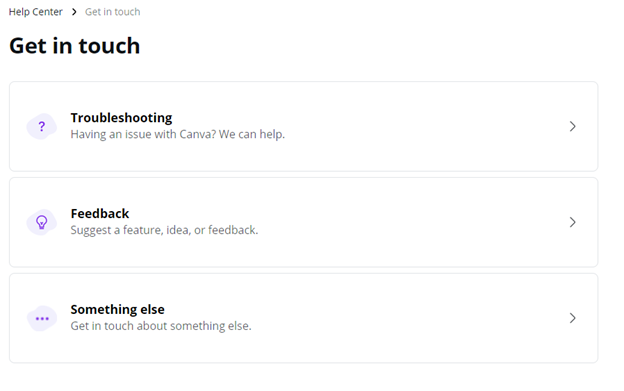It’s usually wise to avoid generalization. But when enough evidence piles up, some truths just can’t be ignored.
After a decade of working with subscription-based businesses, we’ve seen a few patterns play out—enough for us to notice that certain tactics and strategies simply work better than others.
It’s important to take time to recognize the things that earn wins again and again. To that end, here are 7 things that often separate the subscription-based businesses that succeed from those that fade into the background.
1. They perfect their pricing strategy.
Spend time on your pricing!
Too often, subscription-based business leaders underprice their product or use a pricing strategy that doesn’t fit their offering. They match or undercut their competition, or simply use a cost-plus approach.
Doing this chops a subscription business model off at the knees. Without pricing based on the product’s true value, it becomes difficult to fund the work necessary to reach business goals and continue providing a top-notch offering as time goes on.
“The most profitable pricing strategies put customer value front and center,” asserts Profitwell CEO Patrick Campbell.
In addition to value-based pricing, subscription-based businesses should iterate on pricing often. This ensures your pricing continuously reflects your value as your product, your customers, and the market changes.
In fact, Campbell’s team at Profitwell found businesses that iterate on pricing every six months nearly double their average revenue per user.
2. They keep their buyers’ needs front and center.
Today’s customers demand flexibility and customization. And for subscription-based businesses to compete, they have to offer both. This often takes the form of:
- offering multiple subscription and usage plan options, and
- offering optional add-ons and easy upgrades that provide further customization for customers.
Microsoft is one example of a business that found success with this approach. The legacy tech brand introduced Office 365 shortly after Google Apps for Your Domain—now Google Workspaces—rolled out. With Office 365, customers could enjoy all the collaborative benefits of a cloud-based platform without giving up the familiar and trusted Microsoft programs they already used. Convenient!
With monthly and annual plans for both personal and business use, Office 365 gives customers flexibility. This move kept the company’s subscription-based business model competitive, even against a disruptor like Google.
3. They give their subscribers more control.
It’s not enough to provide multiple plan offerings. Today’s customers also want control over their subscriptions.
The ability to activate and migrate from one plan to another without having to contact a support team is a major selling point for customers that may be managing multiple subscriptions with various providers.
To that end, self-service portals make all the difference. These portals allow customers to make changes to their subscription and account details all on their own, putting the power in their hands. Self-service functionality:
- allows customers to get the service they need precisely when they need it
- ensures more accurate and up-to-date data on customers
- eliminates numerous manual subscription management tasks for your team, and
- reduces the occurrences of failed payments while increasing collections assurance.
That last benefit alone may be reason enough to give your subscription customers more control with self-service functionality.
Subscription analytics provider Baremetrics found businesses lose around 9% of their monthly recurring revenue to failed payments. When customers can update their payment method, or be directed to update it after a failed payment attempt, it’s far more likely their account details and payment method will stay current and collections will proceed like clockwork.
4. They automate their RevOps.
Revenue operations, or RevOps, means aligning sales, marketing, and customer success across the customer journey. Put simply, it’s customer centricity across departments.
When done well, RevOps maximizes revenue as well as the customer experience.
According to Forrester, enterprises will rapidly increase their investments in automation technology in the next few years. Daniel Moore at data provider SalesIntel predicts that many of these investments will center around RevOps.
“This is because automation technology has the promise to increase the efficiency of many functions crucial to revenue generation. It also has the potential to increase the ability of RevOps to achieve mission-critical company goals, such as accelerating sales velocity.”
In addition to marketing, sales, and customer success, your business’s billing solution is a crucial supporting element of your RevOps. After all, you can bring in great leads, make them customers, and manage their experience, but if you can’t accurately bill them and collect payments, your subscription-based business isn’t going to grow and succeed.
One solution is to streamline your revenue engine with an automated subscription billing platform. Designed specifically for subscription-based business models, these platforms simplify billing and collections while providing strategic data on customers in real-time. This data can be used to enhance the actions of every other department involved in your revenue operations.
With automated billing, businesses also free up time spent on manual processes while reaping the profit benefits of a single source of truth (SSOT) for their accounts receivable.
5. They continually improve their product.
Today’s subscription customers assume their recurring payments cover continual improvements to a product or service. Subscription-based businesses must deliver on this expectation or risk low retention. After all, why keep paying for something month over month, year over year, if it becomes outdated or fails to meet your growing needs?
Adobe understands.
- Before Photoshop transitioned to a subscription model, the creative software provider covered the cost of its ongoing product development with one-time fees, sometimes as high as $999.
- Now, subscribers pay just $9.99/month to access Adobe’s Creative Cloud platform and use Photoshop.
- In exchange, Photoshop updates roll out every six months. What’s more, the program is consistently rated #1 in photo editing software across multiple industry publications.
With a very affordable monthly plan, ongoing updates, and a top-quality product, Adobe acquires and easily retains a massive customer base. Before Creative Cloud launched, Adobe had 12.8 million customers making one-time payments for updates. Today, their subscriber count tops 22 million.
Product evolution matters.
6. They provide great customer support.
The only way to ensure customers are getting the most value from your product is to engage with them directly. To this end, successful subscription-based businesses have dedicated customer success and customer support teams that do things like:
- track Net Promoter Scores (NPS)
- monitor customer feedback, and
- enhance their product and processes based on that feedback.
For example, when Canva’s users begin looking for help, the business offers a large library of articles that address commonly asked questions. If a customer can’t find a solution in the library, they’re directed to start diagnosing their problem with this screen:

By combining feedback and common troubleshooting issues gained through this process, Canva can expand on its library and make recommendations to the development team to improve its product.
Live chat features are also becoming more and more popular. These enable customers to get in-the-moment support so they can continue using a service seamlessly.
7. They earn and retain their customers’ trust.
“When companies first started adopting the SaaS industry model, their biggest concern was trusting the service provider’s competency,” Hansen Tong at PRWeb says.
Certainly, subscription-based businesses want their customers to trust that the value promised to them will be delivered. Doing this requires making a good impression up-front, then continually delivering on that promise throughout their subscription.
But customers also want to trust they won’t be surprised by sudden subscription changes. These may include:
- unexpected charges
- price increases
- product/feature discontinuations, and
- usage throttling.
Today, however, the conversation about trust centers more around the value of customer data.
While some business behemoths like Amazon build their tech stack in-house rather than hand data over to external platforms, the vast majority find more efficiency in using cloud-based SaaS solutions. For these businesses, trusting those third parties is essential.
For this reason, successful subscription-based businesses ensure the vendors they work with for marketing, customer management, billing, accounting, and more adhere to strict privacy and security standards.
When your subscription-based business is trustworthy, customers feel safe knowing they won’t be taken advantage of, making them more likely to stick around.
Learning from the masters of subscription-based business
When done right, the subscription model lends itself to unlimited growth and success potential. Subscription-based businesses can apply the learnings, stories, and strategies of giants like Microsoft and Adobe to their own organizations.
Consider your business’s pricing, customer-centricity, tech-stack, trustworthiness, and more.
Are you paving the way to subscription business success?
Quick FAQs about Subscription-Based Businesses
Q: What are the key strategies of successful subscription-based businesses?
Successful subscription-based businesses often adopt specific strategies to ensure their success. These include spending time on pricing strategies, offering flexible and customizable plans, empowering customers with self-service portals, aligning sales, marketing, and customer success across the customer journey (RevOps), maintaining product evolution, engaging with customers directly, and fostering trust with customers.
Q: How does pricing play a role in the success of subscription-based businesses?
Pricing plays a vital role in the success of a subscription-based business. A value-based pricing strategy ensures that the product’s price reflects its true value. Iterating on pricing frequently ensures the pricing continuously aligns with the product’s value as it, the customers, and the market evolve.
Q: What is the significance of flexibility and customization in subscription-based businesses?
Today’s customers demand flexibility and customization. Successful subscription-based businesses often provide multiple subscription and usage plan options along with optional add-ons and easy upgrades for further customization, enhancing customer satisfaction and retention.
Q: What is the role of self-service portals in subscription-based businesses?
Self-service portals are crucial for subscription-based businesses as they allow customers to manage their subscriptions independently. This feature ensures accurate customer data, eliminates manual subscription management tasks, reduces instances of failed payments, and enhances customer satisfaction.
Q: What is Revenue Operations (RevOps) and how does it contribute to the success of subscription-based businesses?
RevOps refers to the alignment of sales, marketing, and customer success across the customer journey. It enhances the customer experience and maximizes revenue. In subscription-based businesses, automated billing solutions can support RevOps by simplifying billing and collections while providing strategic customer data.
Q: How does product evolution factor into the success of subscription-based businesses?
Subscription customers often expect their recurring payments to cover continuous improvements to a product or service. Successful subscription-based businesses deliver on this expectation, ensuring customer retention and satisfaction.
Q: What is the role of customer engagement in successful subscription-based businesses?
Direct customer engagement is crucial for successful subscription-based businesses. Having dedicated customer success and support teams helps track customer feedback and enhance the product and processes accordingly.
Q: How do successful subscription-based businesses foster trust with customers?
Trust is a crucial element for subscription-based businesses. It involves making a good initial impression and continually delivering on promises throughout the subscription. Ensuring data privacy and adhering to strict security standards also go a long way in building trust with customers.
Q: What are some successful subscription-based businesses?
Adobe, Microsoft, and Canva are successful subscription-based businesses that have implemented the strategies mentioned above effectively. They have managed to build trust, engage with customers, evolve their products, and implement effective pricing strategies, among other things.
Q: What potential pitfalls should subscription-based businesses avoid?
Subscription-based businesses should avoid pitfalls such as underpricing their product, not offering flexible and customizable plans, lacking a self-service portal, not aligning their operations for customer-centricity, not continually evolving their product, failing to engage directly with customers, and not fostering trust with customers.








